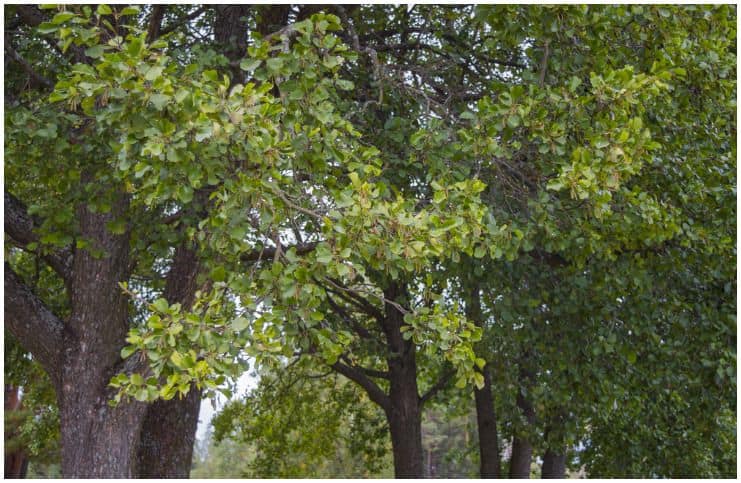Black Alder (Alnus Glutinosa) – Health Benefits:
Black Alder is a strong tree, native to Europe and regions of Asia and Africa, belonging to the family Betulaceae.
It can reach up to 28 meters high and, exceptionally rare, up to 37 meters.
The bark of young trees is greenish-brown, but in time it becomes dark gray, with a fissured appearance.
Its almost round leaves are sticky.
The flowers are shaped like catkins, similar to the flowers of a nut tree or birch. This tree grows in moist soils, water meadows, and forests with mixed stands.
It is used for phytotherapeutic purposes, for its bark, buds, and leaves. The following qualities guarantee its effectiveness: bitter tonic, antiseptic, disinfectant, sudorific, astringent, antidiarrheal, healing, and hemostatic.
Chemical composition:
The bark contains tannins (about 16%), taraxerol (a pentacyclic triterpenoid which is oleanan-3-ol lacking the methyl group at position 14), lupeol (a pentacyclic triterpenoid in which the hydrogen at the 3beta position is substituted by a hydroxy group), and minerals.
The leaves contain hyperoxide, quercitrin, tannins, and minerals. This tree, interestingly, has a symbiotic relationship with Frankia alni – a nitrogen-fixing bacterium.
Health benefits and uses of Black Alder (Alnus Glutinosa)
Products containing the leaves of this tree can boost the activity of mammary glands. According to recent studies and observations, the infusion of black alder leaves can be used with good results against fever and throat inflammations.
Alnus glutinosa leaves applications are indicated in the treatment of abscesses, rheumatism, or paralysis.
Internal use
- Treatment of fever and diarrhea: decoction of 10 g (1 tbsp) bark powder and a cup (200ml) of water. Boil it, leave it covered for 5 minutes, and then decant. Drink it in 2 innings, at small time intervals.
- Treatment of stomach aches: infusion of 1 teaspoon of buds and a cup of boiling water. Leave it covered for 15 minutes and then decant. Drink 1-2 cups a day.
External use
- To stop the secretion of milk at the end of the childbed period and heal “breast hardness”: young, raw leaves poultices are applied directly on the breast.
- For treating skin ulcers, and leucorrhoea, for toning oral mucosa and gums: infusion of 2 tablespoons dried, crushed leaves, and a cup (250ml) of boiling water. Leave it covered for 15-20 minutes and then decant. Use it for vaginal douching and gargling.
- For treating superficial external bleeding, rheumatism, foot perspiration, toothache, gingivitis: decoction of 1 tablespoon bark powder, and a cup of water. Boil for 5 minutes and then decant. Use it for washing or as a local tampon. In the case of oral conditions, use it for gargles.
Interesting Fact
The Celts believed that the tree held diving powers, particularly when identifying diseases.
READ THIS NEXT:
Horned Melon (Kiwano): Health Benefits
Lion’s Mane Mushroom – Side Effects
Reference https://www.researchgate.net/publication/261323765_Black_Alder_Alnus_glutinosa
